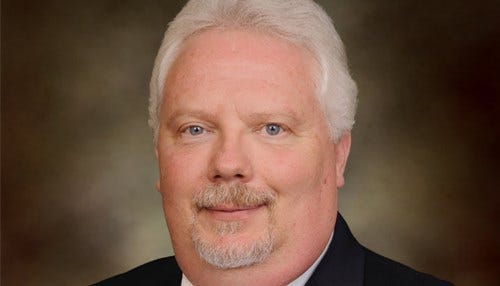Indiana’s Rural Digital Divide is Real, But There Are Solutions

Subscriber Benefit
As a subscriber you can listen to articles at work, in the car, or while you work out. Subscribe NowWhile the digital divide may be shrinking in the United States, it is getting wider in our nation’s rural communities, and this is costing these communities $47 billion a year, according to a recent study by the U.S. Chamber of Commerce and Amazon. With a rural population of roughly 22 percent, Indiana has reason to be concerned.
The digital divide—a gap in access to information and communications technology— was generally seen as shrinking in recent years with the proliferation of mobile phones, which provide some internet access via 3G or 4G technologies. However, as the role of digital technology expands to touch nearly aspect of our lives, cellular technology simply can’t keep pace.
Urban areas have responded by laying high speed fiber to meet the needs of today’s data hungry applications. However, the low density of residents per mile plus the high cost to install fiber make this unaffordable for communications providers in many rural areas. Even 5G wireless networks, which promise data rates up to 100 times faster than previous cellular technology, are out of reach for most rural communities because each 5G antenna requires a fiber data pipeline.
So, the divide feeds on itself, and is quickly becoming both a social issue and an economic development challenge in rural communities.
Despite these challenges, rural Hancock County just east of Indianapolis is considered the most connected county in the state. Not a coincidence, McCordsville, in Hancock County, is the second fastest growing community in Indiana and a model of connectivity: 100 percent of its homes and businesses have high speed fiber with synchronous internet access of up to 100 gigabits.
A recent economic development study of the Mount Comfort Corridor in Hancock County by the Urban Land Institute highlighted that the area benefits from the "exceptional fiber optic capability" required for business and economic development.
Hancock County has been able to achieve this because its rural utility co-op, NineStar Connect, lays fiber whenever they install other utility services, like electric. This means they efficiently “dig once but lay twice,” and use existing conduits to bring fiber right to the home or business. NineStar now offers fiber optic services in 10 rural Indiana counties.
Today, more than half of Indiana’s 92 counties have declining populations and dwindling tax receipts. This can impact quality of education, reduce quality of place, and accelerate population outflow. It’s a vicious cycle that is difficult to reverse, but fiber can help by driving economic development and promoting quality of place.
The Chamber of Commerce study noted that Indiana could add more than $2 billion to its GDP each year if all rural communities had broadband services. An example of how valuable fiber is to rural communities is Intat Precision, an automotive component manufacturer based in Rushville. Facing the need to expand in order to survive, the company considered leaving the city in order to get the fiber infrastructure needed to operate. NineStar was able to accommodate this need, enabling the company to stay, expand and invest in additional jobs.
Fiber is a true economic driver. A study conducted by the Purdue Center for Regional Development found that every dollar invested in broadband in Indiana’s rural communities returns nearly $4 to the economy, with gains in the areas of modern healthcare and education, economic and workforce development, farm income, and consumer savings.
In addition to powering a host of home-based businesses, from Etsy storefronts to entrepreneurial start-ups, fiber fuels telecommuting and provides a means to solve the worker shortage in high-priced cities by giving rural residents the ability to work from home.
Fiber connectivity also will help drive the next generation of smart farming with a host of internet-enabled agri-tech applications, such as self-driving tractors, drone-enabled field surveyors, and leaf scanners that can detect crop nourishment needs.
Finally, when it comes to economic development and future viability of our rural communities, fiber will provide the connections that will entice people to come live in these areas and help them thrive. Imagine your child coming home from school with a digital device and not being able to use it at home. It’s not uncommon in rural areas for parents to spend the evening at the library or the local McDonalds so their kids have access to WiFi in order to complete assignments. Or imagine having to drive 25 miles to see a doctor because you don’t have a way for your Internet-connected monitor to relay vital health information. These scenarios play out every day in rural Indiana.
Indiana Governor Eric Holcomb should be celebrated for his $100 million Next Level Connections Broadband Grant Program, which recognizes that sustainable solutions to the state’s rural digital divide will not come from large, out-of-state corporations but through community-based solutions.
Nearly 100 years ago, consumer-owned local non-profit cooperatives formed to connect rural farms and residences to the electrical grid, fueling economic opportunity and quality of life in these communities. Those electric co-ops continue to service areas that larger corporations choose not to ignore. They may very well be a key vehicle to solving the digital divide in Indiana’s rural communities today.
In order to attract the businesses, commerce and residents needed for vibrant rural communities, residents must demand connectivity that’s on par with what’s available in urban areas, and look for creative solutions to get it. This includes tapping the resources of non-profit rural utility co-ops that have figured out sustainable business models that work in rural communities where traditional utilities have not.
Michael Burrow is president and CEO of NineStar Connect.
